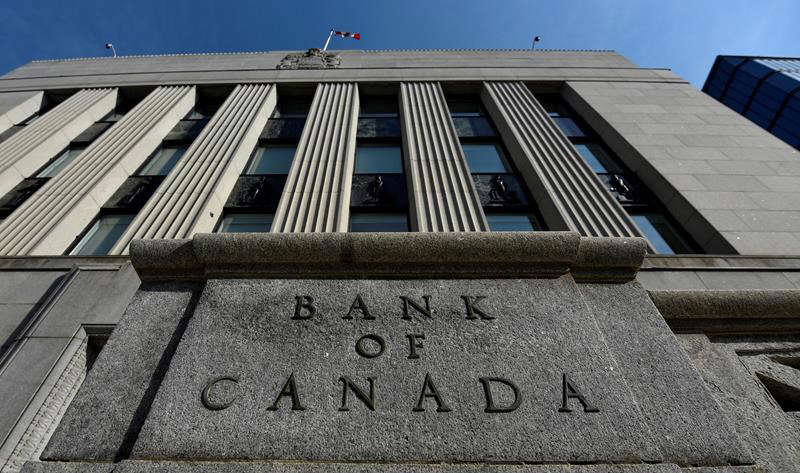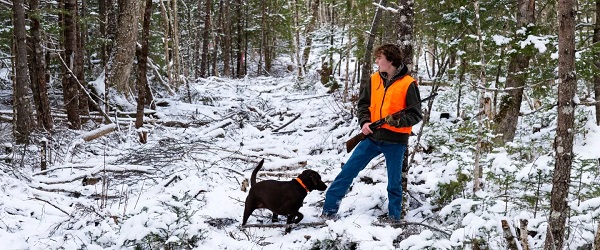Business
Pornhub hit with lawsuit over videos victimizing 12-year-old who was drugged and raped

From LifeSiteNews
There is a backlog of about five months between when a user reports a video and an authorized team leader reviews it to determine whether to remove it, allowing the video to remain available on the Pornhub site for download and redistribution for nearly a half year after the complaint was first reviewed.
A man who as a 12-year-old boy was drugged and raped in nearly two dozen videos that were uploaded to Pornhub by his victimizer for monetary gain is suing the massive online pornography leviathan for breaking child sex trafficking and RICO laws.
According to the world’s leading anti-porn activist Laila Mickelwait, “His jury trial could put Pornhub out of business.”
In recent years, scandal-plagued Pornhub — and its shadowy parent company, Mindgeek, which recently changed its name to “Aylo” to escape its “scandal-ridden smut empire” reputation — has come under fire for posting child sexual exploitation material, sexual trafficking, and assault videos and then ignoring victim’s pleas to remove the videos from their website.
The predator who admitted that in the summer of 2018 he used, induced, and enticed the young boy and another minor to engage in sexually explicit conduct for the purpose of producing video pornography is now behind bars serving a 40-year sentence for “sexual exploitation of a child, advertising child pornography, and distribution of child pornography.”
However, Mindgeek and Pornhub have yet to face their young accuser for enabling the public distribution of the videos.
According to the lawsuit, videos of the boy’s molestation “astonishingly” generated nearly 200,000 video views, and as a result of Mindgeek’s actions and/or inactions, the now-young man “has suffered incomprehensible past and present physical, emotional, and mental trauma.”
“MindGeek knows that there is a demand for CSAM (Child Sexual Abuse Material) on their sites and they cater to this demand,” according to the 78-page legal complaint filed in a U.S. District Court in Alabama where the sexual exploitation of the minors took place.
Hundreds of thousands of ‘teen’ sex video titles available
The case asserts that Mindgeek has historically sought to maximize profit, aggressively promoting child porn via titles and video descriptions that would more easily direct Google users to the exploitative videos featured on Pornhub.
“Many of the tags, categories, and search suggestions that have been created or edited by MindGeek facilitate users seeking easy access to child pornography, child sex trafficking, or any other form of child sexual abuse material, including that depicting” the then-12-year-old victim, cited in the complaint as CV1, in order to protect his identity.
“One such tag MindGeek used to classify pornographic content on its websites was ‘Teen.’ The suggested terms include ‘abused teen,’ ‘crying teen,’ ‘extra small petite teen,’ and ‘Middle School Girls,’” the legal complaint explains.
“In 2018, the word ‘teen’ was the seventh most searched term on all of Pornhub,” the complaint notes. “Other eponymous search terms, including ‘rape,’ ‘preteen,’ ‘pedophilia,’ ‘underage rape,’ and ‘extra small teens’ would call up videos depicting the same.”
The proliferation of these keywords and tags on the website ensures that when outside users Google these terms, Pornhub, or another MindGeek website, will be among the top results. This draws new users, even those searching the internet for illegal content, to MindGeek websites.
MindGeek’s aggressive data collection and traffic analytics mean that MindGeek knows exactly what users are looking for (and what exists) on their sites and that this includes sex trafficking material and CSAM.
For example, as The New York Times recently reported, as of December 4, 2020, a search for “girl under18” led to more than 100,000 videos. And a search for “14yo” led to more than 100,000 videos and “13yo” led to approximately 155,000 videos. MindGeek sought to capitalize on such traffic by allowing illegal search terms, creating suggested search terms, keywords, and tags
Purposefully failing to censor criminal child/teen porn videos
The case notes that while Mindgeek-Pornhub does have online moderators who review complaints about videos on the site, the 10 moderators “have no prior training, medical or otherwise, to identify whether someone depicted in a pornographic video is a child” and are, by design, set up to fail at their task.
The ten individuals on the “moderation/formatting team” were each tasked by MindGeek to review approximately 800-900 pornographic videos per 8-hour shift, or about 100 videos per hour. According to Pornhub, there are approximately 18,000 videos uploaded daily, with an average length of approximately 11 minutes per video. Hence, each moderator is tasked with reviewing approximately 1,100 minutes of video each hour. This is an impossible task, and MindGeek knows that.
To compensate for and accomplish the impossible task, moderators/formatters fast-forward and skip through videos, often with the sound turned down. The problem is not resources: MindGeek’s annual revenues are at least $500 million, and it could certainly hire and train more true moderators.
One of the most disturbing assertions in the case is that “When minor victims of sex trafficking and their representatives have contacted MindGeek to remove videos of them from its websites, MindGeek has refused to do so.”
In some cases, MindGeek moderators/formatters even looked at video comments, deleted those noting a video constituted child pornography or otherwise should be removed from the system, and left the video up.
The MindGeek moderators/formatters are discouraged from removing illegal content for particularly profitable users. Generally, when an uploader has a history of highly viewed content, the employees are only permitted to send warning letters about illegal or inappropriate content.
There is a backlog of about five months between when a user reports a video and an authorized team leader reviews it to determine whether to remove it, allowing the video to remain available on the Pornhub site for download and redistribution for nearly a half year after the complaint was first reviewed.
The videos that the boy’s victimizer uploaded to Pornhub bore “disturbing titles that clearly suggested the child depicted was a minor, including but not limited to: ‘(Had sex with) my Step Nephew’; ‘Taking Teen Virginity’; ‘My sweet little nephew.’ The other 20 video titles are too crude and obscene for LifeSiteNews to cite.
Despite those titles and the content of the videos, Mindgeek “never informed the authorities about the identity of the child sexual predator, the fact he posed child sexual violence, or the fact that child sexual violence was being utilized on their platforms for profit to their mutual benefit.”
At no time did the MindGeek Defendants attempt to verify CV1’s identity or age, inquire about their status as minor children, victims of sex trafficking, or otherwise use their platform to root out the trafficking of their images. Instead, the MindGeek Defendants continued to disseminate these images around the world for profit even after law enforcement informed the MindGeek Defendants the images contained child pornography.
‘Pornhub would rather stop doing business than prevent kids from watching porn’
Pornhub has now ceased operations in 12 states that have begun to require age verification in order to enter the porn sites: Texas, Utah, Arkansas, Virginia, Montana, North Carolina, Mississippi, Kentucky, Indiana, Idaho, Kansas, and Nebraska.
“The world’s biggest porn site would rather stop doing business than prevent kids from watching,” conservative commentator and author Michael Knowles noted earlier this year. “Quite telling!”
“Pornhub has decided that age verification laws damage their business model to such an extent that it is better for them to simply block entire states rather than comply with (age verification laws),” LifeSiteNews columnist Jonathon Van Maren wrote in January.
Despite the legal troubles, Pornhub racked up a total of 5.49 billion visits globally in May, and with over 1.1 billion visits in the U.S. was ranked 10th nationally for online traffic. It’s not unusual for the website to reach over 10 billion total global monthly visits.
Business
Loblaws Owes Canadians Up to $500 Million in “Secret” Bread Cash

Yakk Stack
(Only 5 Days Left!) Claim Yours Before It’s GONE FOREVER
Hey, all.
Imagine this…you’re slicing into that fresh loaf from Loblaws or just making a Wonder-ful sammich, the one you’ve bought hundreds of times over the years, and suddenly… ka-ching!
A fat check lands in your mailbox.
Not from a lottery ticket, not from a side hustle – from the very store that’s been quietly owing you money for two decades of illegal price fixing.
Sound too good to be true?
It’s real.
It’s court-approved.
And right now, on December 7, 2025, you’ve got exactly 5 days to grab your share before the door slams shut. Don’t let this slip away – keep reading, feel that spark of possibility ignite, and let’s get you paid.
Back in 2001, you were probably juggling work, kids, or just surviving on that weekly grocery run. Little did you know, while you were reaching for the President’s Choice white bread or those golden rolls, Loblaws and their cronies were playing a sneaky game of price-fixing. They jacked up the cost of packaged bread across Canada – every loaf, every bun, every sneaky sandwich slice. For 20 years. From coast to coast to coast.
And now…the courts have spoken. $500 million in settlements to make it right. That’s not pocket change – that’s your money, recycled back into your life.
Given the number of people who will be throwing in a claim…this ain’t gunna be life-changing cash…but also, given the cost of food in Canada, it’s better than sweet fuck all, which you will receive by NOT doing this.
If you’re a Canadian resident (yep, that’s you, unless you’re in Quebec with your own sweet deal), and you’ve ever bought bread for your family – not for resale, just real life – between January 1, 2001, and December 31, 2021… you’re in.
No receipts needed.
No fancy proofs.
Just you, confirming your story, and boom – eligible.
Quick check: Were you under 18 back then?
Or an exec at Loblaw?
Nah, skip it.
But for the rest of us everyday schleps…Jackpot.
Again…the clock’s ticking on this.
Claims opened on September 11, 2025, and slam shut on December 12, 2025.
That’s this Friday.
Payments roll out in 2026, 6-12 months later, straight to your bank or mailbox.
Here’s what you need to do…
- Breathe deep, click → HEREQuebec frens →HERE
- 10 second form that’s completed by your autofill…30 seconds off of a mobile device.
- Hit submit and wait for that sweet cash to hit your account.
Again…this won’t be life saving money and most certainly ain’t gunna hit your account before Christmas.
And before you go out an Griswald yourself into a depost on pool in the backyard…you may only end up with enough cash for the Jam-of-the-Month…the gift that truly does give, all year round…just be a little patient.
If you end up with a couple of backyard steaks in time for summer…
Some treats for the children or grandchildren…
Maybe just a donation to the foodbank…
This is what’s owed to you. Your neighbors. Friends. Family.
Take advantage!
Banks
To increase competition in Canadian banking, mandate and mindset of bank regulators must change

From the Fraser Institute
By Lawrence L. Schembri and Andrew Spence
Canada’s weak productivity performance is directly related to the lack of competition across many concentrated industries. The high cost of financial services is a key contributor to our lagging living standards because services, such as payments, are essential input to the rest of our economy.
It’s well known that Canada’s banks are expensive and the services that they provide are outdated, especially compared to the banking systems of the United Kingdom and Australia that have better balanced the objectives of stability, competition and efficiency.
Canada’s banks are increasingly being called out by senior federal officials for not embracing new technology that would lower costs and improve productivity and living standards. Peter Rutledge, the Superintendent of Financial Institutions and senior officials at the Bank of Canada, notably Senior Deputy Governor Carolyn Rogers and Deputy Governor Nicolas Vincent, have called for measures to increase competition in the banking system to promote innovation, efficiency and lower prices for financial services.
The recent federal budget proposed several new measures to increase competition in the Canadian banking sector, which are long overdue. As a marker of how uncompetitive the market for financial services has become, the budget proposed direct interventions to reduce and even eliminate some bank service fees. In addition, the budget outlined a requirement to improve price and fee transparency for many transactions so consumers can make informed choices.
In an effort to reduce barriers to new entrants and to growth by smaller banks, the budget also proposed to ease the requirement that small banks include more public ownership in their capital structure.
At long last, the federal government signalled a commitment to (finally) introduce open banking by enacting the long-delayed Consumer Driven Banking Act. Open banking gives consumers full control over who they want to provide them with their financial services needs efficiently and safely. Consumers can then move beyond banks, utilizing technology to access cheaper and more efficient alternative financial service providers.
Open banking has been up and running in many countries around the world to great success. Canada lags far behind the U.K., Australia and Brazil where the presence of open banking has introduced lower prices, better service quality and faster transactions. It has also brought financing to small and medium-sized business who are often shut out of bank lending.
Realizing open banking and its gains requires a new payment mechanism called real time rail. This payment system delivers low-cost and immediate access to nonbank as well as bank financial service providers. Real time rail has been in the works in Canada for over a decade, but progress has been glacial and lags far behind the world’s leaders.
Despite the budget’s welcome backing for open banking, Canada should address the legislative mandates of its most important regulators, requiring them to weigh equally the twin objectives of financial system stability as well as competition and efficiency.
To better balance these objectives, Canada needs to reform its institutional framework to enhance the resilience of the overall banking system so it can absorb an individual bank failure at acceptable cost. This would encourage bank regulators to move away from a rigid “fear of failure” cultural mindset that suppresses competition and efficiency and has held back innovation and progress.
Canada should also reduce the compliance burden imposed on banks by the many and varied regulators to reduce barriers to entry and expansion by domestic and foreign banks. These agencies, including the Office of the Superintendent of Financial Institutions, Financial Consumer Agency of Canada, Financial Transactions and Reports Analysis Centre of Canada, the Canada Deposit Insurance Corporation plus several others, act in largely uncoordinated manner and their duplicative effort greatly increases compliance and reporting costs. While Canada’s large banks are able, because of their market power, to pass those costs through to their customers via higher prices and fees, they also benefit because the heavy compliance burden represents a significant barrier to entry that shelters them from competition.
More fundamental reforms are needed, beyond the measures included in the federal budget, to strengthen the institutional framework and change the regulatory mindset. Such reforms would meaningfully increase competition, efficiency and innovation in the Canadian banking system, simultaneously improving the quality and lowering the cost of financial services, and thus raising productivity and the living standards of Canadians.
-

 Business2 days ago
Business2 days agoRecent price declines don’t solve Toronto’s housing affordability crisis
-

 MAiD1 day ago
MAiD1 day agoFrom Exception to Routine. Why Canada’s State-Assisted Suicide Regime Demands a Human-Rights Review
-

 Automotive2 days ago
Automotive2 days agoPower Struggle: Governments start quietly backing away from EV mandates
-

 Energy2 days ago
Energy2 days agoUnceded is uncertain
-

 Business24 hours ago
Business24 hours agoCarney government should privatize airports—then open airline industry to competition
-

 Business2 days ago
Business2 days agoNew Chevy ad celebrates marriage, raising children
-

 Business2 days ago
Business2 days agoOttawa’s gun ‘buyback’ program will cost billions—and for no good reason
-

 Business1 day ago
Business1 day agoWhat’s Going On With Global Affairs Canada and Their $392 Million Spending Trip to Brazil?







